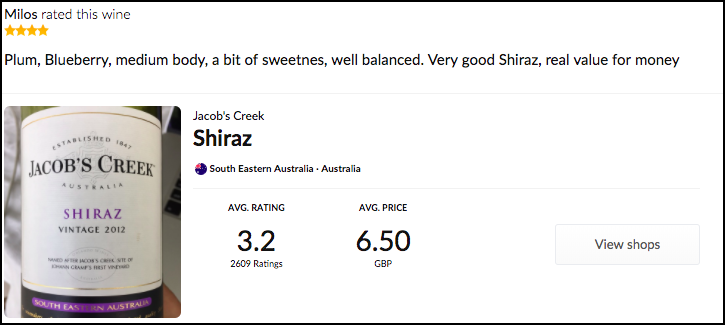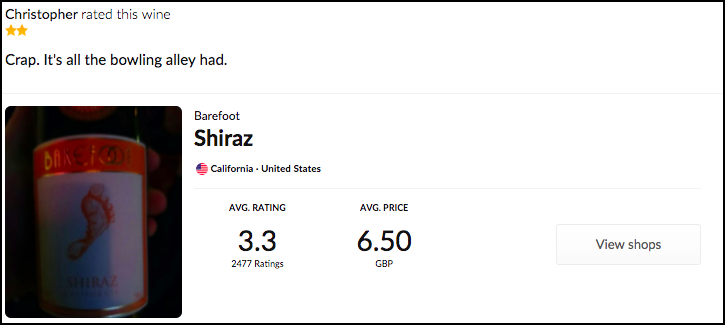Tasting the UK's top ten wine brands

Everyone knows that much of what you read online is untrue, very possibly including this sentence. But far fewer of us realise that we only ever scrape the surface of this online waffle. Estimates vary, but search engines apparently index only something like 4% of the internet.
Most of the rest is known as the deep web; this is largely benign content including anything behind a paywall, plus email services, online banking details and the like. Huge parts of the internet remain out of bounds to the majority of its users.
For wine, there's a similar statistic: 96% of the wine sold in the UK retails for less than £9 per bottle, according to page five of this report (thanks to Tim Jackson MW for this information). So while all wine is theoretically available to everyone, anything above £9 is restricted to a small minority of drinkers.
That means that almost all the content on this site – in excess of 11,000 articles and 160,000 tasting notes, plus the complete Oxford Companion to Wine, amounting to many millions of words, all for only £8.50 a month or £85 a year, folks – is dedicated to just 4% of the wine that Britons actually drink.
So to do my bit to correct that imbalance, I’m filling this month’s Spittoon with a tasting of the UK’s top ten wine brands.
Within a half-mile radius of my front door, I visited four off-licences and found all ten of them, buying five each of Merlot and Shiraz, the UK’s most popular red wine varieties.
The average price per bottle was £6.50, with Isla Negra the cheapest at £5 and Casillero del Diablo most expensive at £6.99. The line-up, in tasting order, was as follows:
- Isla Negra, Seashore Merlot 2013 Central Valley
- Echo Falls Merlot NV California
- Blossom Hill Merlot 2016 California
- Gallo Family Vineyards Merlot 2015 California
- Casillero del Diablo Merlot 2016 Valle Central
- Barefoot Shiraz NV California
- Yellow Tail Shiraz 2016 South Eastern Australia
- Hardys Varietal Range Shiraz 2015 South Eastern Australia
- Jacob’s Creek, Classic Shiraz 2016 South Eastern Australia
- McGuigan Estate Shiraz 2016 South Eastern Australia
I confess it wasn’t the highlight of my year. But neither was it an affront to my over-pampered tastebuds. In fact, it was a useful insight into what the majority of wines really taste like.
Overall, they were not at all bad. Yes, they are very simple, but most of them were at least drinkable, fruity and balanced. A few suffered from artificial-tasting oak treatment (Gallo and Yellow Tail), but that’s hardly a crime at this level. Several had generous residual sugar (Isla Negra has 6 g/l, while Yellow Tail is more like 12 g/l), which we all know helps the medicine go down.
Only one of the ten displayed gross faultiness (Blossom Hill, which had putrefied fruit flavours and harsh, stripping acidity), while several others were positively enjoyable – I was especially impressed by Barefoot Shiraz, which had proper varietal flavour and decent tannic feel too.
There’s a general presumption among wine lovers that big high-street brands will taste bad. Inevitably they’re going to rank lower than the 4% of wines with which we are normally preoccupied, but the quality of the ten that I tasted was entirely fair for their price.
There's another general presumption that the entire internet consists of the 4% that we see via search engines, unaware of the whole other world lurking beneath. Wine can be similarly rareified, so it's rather reassuring to find that the other end of the scale is, well, largely benign.
My tasting notes follow below. Of course, they are only my personal opinion – so in the interests of fairness, here are some eye-opening alternative views on these wines, found where else but on the internet, courtesy of Vivino.




These notes are arranged in the order of tasting.
Become a member to view this article and thousands more!
- 15,397 featured articles
- 274,704 wine reviews
- Maps from The World Atlas of Wine, 8th edition (RRP £50)
- The Oxford Companion to Wine, 5th edition (RRP £50)
- Members’ forum
- 15,397 featured articles
- 274,704 wine reviews
- Maps from The World Atlas of Wine, 8th edition (RRP £50)
- The Oxford Companion to Wine, 5th edition (RRP £50)
- Members’ forum
- Commercial use of our Tasting Notes

